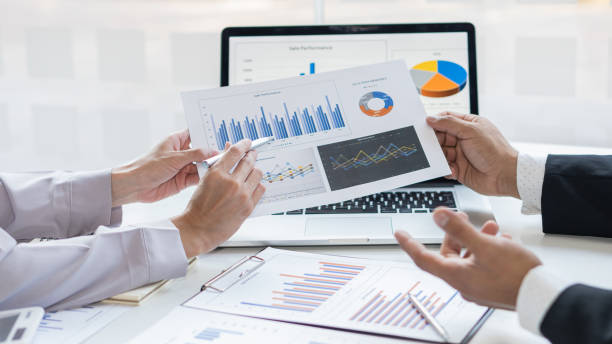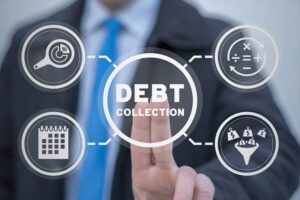In the business world, it’s common to wonder, “What is debt recovery?” or “How do I recover unpaid bills?” These questions lead us into understanding a structured method for recovering money that’s owed, while protecting relationships and improving cash flow.
Debt collection, payment recovery, and debt recovery steps all refer to the methods businesses use to pursue unpaid obligations from customers or clients.
In this comprehensive guide, we’ll explore:
• What debt recovery means and why it matters
• The full debt collection process, step by step
• Common debt recovery methods and tools
• How emerging AI debt recovery software is changing the game
• Best practices for managing bad debt recovery
• Transitioning to smart solutions that automate the payment recovery process
By the end, you’ll have a clear roadmap—from defining debt recovery to applying modern automation in your workflow.
What is Debt Recovery?
At its core, debt recovery refers to the activities taken to recover money that a customer or client owes you. This applies to everything from a small invoice to a large outstanding balance.
To break it down simply:
• Someone owes you payment
• You start a process to track, remind, and collect that payment
• The goal is to close the balance and maintain a positive working relationship
This is different from passive follow-up; debt recovery is a proactive, structured effort to turn unpaid bills into cleared accounts.
Why a Debt Recovery Process Matters?
Understanding the debt recovery process isn’t just about collecting dues. Here’s why it’s important:
• Improves cash flow: Unpaid money affects everyday operations
• Reduces bad debt: A consistent system turns more at-risk invoices into recovered payments
• Preserves relationships: A process keeps outreach professional, respectful, and clear
• Saves time: You can do more with less effort
• Enables scaling: The right process supports more clients without errors and delays
When you understand what debt recovery entails and follow a step-by-step debt recovery process, you’re much better positioned to recover funds quickly and keep clients satisfied in the long run.
Let’s get started.
The Complete 10-Step Debt Recovery Process Explained
To simplify recovery, the steps in the debt collection process typically look like this:
1. Invoice Creation & Clear Terms
Start by setting expectations: timely payments, due dates, and penalties. Make sure your customers understand your payment recovery process before it begins.
2. Reminder Notice Before Due Date
A professional reminder before the due date keeps things friendly and effective. This classic debt recovery step can prevent unnecessary delays.
3. Payment Due Date — First Follow-Up
If the invoice isn’t paid, send a polite but firm follow-up immediately. This step often resolves outstanding payments without escalation.
4. Escalated Reminder & Account Holds
If there’s still no payment, escalate systematically. A debt collection service might place order holds or service restrictions to prompt action.
5. Formal Reminder with Clear Instructions
Issue a formal follow-up outlining amounts, open balance, and next steps. This further clarifies the debt recovery procedure to the debtor.
6. Use of Automated Tools
If manual reminders don’t work, escalate with debt recovery software or debt collection AI software to automate the process and gain visibility.
7. Final Reminder/Pre-Closure Notice
Give a final notice before closing the account. The messaging should remain respectful while being clear about consequences.
8. Settlement Offer or Payment Plan
Where appropriate, offer structured repayment options. This often works for overdue accounts that can’t pay in full immediately.
9. Internal Escalation & Close
If unpaid past a certain threshold, shift the account to a finance specialist or a higher level within your organisation. The balance may be written off or managed differently.
10. Write-Off or Alternative Resolution
If all else fails, the account may be recorded as bad debt. However, a strong debt recovery process will have already maximised recovery chances.
This is what you’re looking for: AI Debt Collection vs. Traditional Methods: What’s Different?
Debt Recovery Methods That Work
A few classic debt recovery methods include:
• Email and phone-based collection: Personal outreach with clear reminders
• Letter or notice campaigns: Formal written reminders to the customer
• Account restrictions: Pausing services/orders
• Automated systems: Tools guiding everything from sending reminders to tracking payments
• Settlement offers: Restructuring payment obligations to recover part or the whole amount
• Agency handoff: Engaging others for collection once internal steps stall
These methods vary depending on your risk tolerance, client relationship, system sophistication, and desired speed of recovery.
But why chase payments when AI can do it for you in this digital-first age?
Enter AI Debt Recovery Software
No longer limited to manual efforts, debt recovery tools harness automation and artificial intelligence:
• Payment reminders: Scheduled emails, SMS, or automated phone calls
• Risk scoring: AI software predicts delinquency, helping you act early
• Escalation workflows: Set rules so reminders escalate automatically
• Real-time dashboards: See which invoices are open, overdue, or held in dispute
• Integrations: Seamless connections to CRM, accounting, and billing systems
• Secure logs: Track every communication for clarity and compliance
By adopting automated debt recovery systems or AI debt collection software, businesses move from fragmented processes to full visibility, control, and scalability. Click here to explore its top 10 advantages in debt collections.
How does the Payment Recovery Process look with Automation?
Let’s say Invoice #123 is due today. Here’s how automation transforms the manual approach:
• Day 1: Friendly pre-due reminder via SMS
• Day 0: Invoice and payment link emailed (on the actual due date itself)
• Day 5: AI sends polite overdue reminder
• Day 10: AI escalates with sterner language, copies manager
• Day 15: Account placed on hold
• Day 20: AI proposes a payment plan
• Day 25: Follow-up begins NP escalation
• Day 30: Charge marked for internal team review
Everything’s tracked, visible, and repeatable. That’s the power of modern debt recovery software.
Managing the Bad Debt Recovery Process
Sometimes payments don’t arrive. A sound bad debt recovery process includes:
• Early identification of high-risk accounts
• Formal letters or communication for resolution
• Final payment plan or closure procedure
• Balanced account reporting
• Data feedback into forecasting and credit decisions
Using debt collection AI software makes each of these steps consistent, transparent, and measurable, turning a negative outcome into a strategic one.
Best Practices for an Effective Debt Recovery Procedure
• Define clear escalation rules—know who acts and when
• Use a communication calendar—pre-date, due date, 5/10/20 days
• Segment by risk & size—prioritise large overdue vs. minor delays
• Integrate your systems—CRM, accounting, and debt recovery tool
• Respect customer relationships—be professional and measured
• Track your success—report paid, open, held, or disputed
• Adjust over time—refine reminders, messaging tone, and categories
Why Businesses Move to Debt Recovery Tools?
Here’s what you gain with debt recovery AI software:
• Time saved: Automate repetitive follow-up tasks
• Fewer errors: No missed reminders or misread notes
• Better prioritisation: Data-driven urgency
• Professional communication: Consistent tone and timing
• Improved cash flow: Faster recoveries and reduced write-offs
• Clear insights: Know which debts are vulnerable or risk-free
Ultimately, you replace reactive chasing with proactive, strategic procedures. Start exploring the top 10 advantages of debt recovery software.
Choosing the Right Debt Recovery Tool
When selecting between debt recovery software options, check for:
• True automation and escalation workflows
• Risk scoring and analytics
• Seamless CRM/accounting integration
• Customizable reminder schedules
• Secure logs and compliance support
• Try-before-you-buy models (free tiers or demos)
TLR DebtXpert, for example, delivers full automation, predictive reminders, and a free-to-start model—perfect for scaling businesses.
This can guide you better: 10 Leading AI Debt Collection Software in 2025 You Must Try.
Why Smart Businesses Choose TLR DebtXpert?
When it comes to recovering overdue payments, time, cost, and consistency matter. That’s why modern businesses—of every size and industry—are turning to TLR DebtXpert, the world’s smartest AI-powered debt recovery platform.
TLR DebtXpert takes the guesswork, stress, and manual follow-ups out of your hands and replaces them with a fully automated, insight-driven system that works 24/7.
Just 3 Simple Steps
You do what you do best. We’ll handle the entire money recovery for you.
1. Upload Your Unpaid Invoices
Just drag, drop, or integrate with your CRM—no tech skills required.
2. Our AI Gets to Work
The system sends timely, personalised reminders and auto-escalates overdue accounts with full compliance.
3. You Get Paid. Fast.
Your recovered funds are routed directly to you—no middlemen, no delays.
The Future: AI + Debt Recovery = Efficiency
By adopting smart debt collection AI software, you’re preparing your business for:
• Growing automated workflows as receivables increase
• More personalised debtor communication for better outcomes
• Higher recovery success rates and stronger cash reserves
• Reduced stress for finance teams and improved focus on growth
• If you want to streamline your step-by-step debt recovery process or scale smarter, this is the time to explore automation.
Final Takeaway
To answer “What is debt recovery?”—it’s more than chasing payments. It’s a carefully designed strategy that includes proactive reminder systems, prioritisation, escalation rules, and modern tools to recover unpaid bills efficiently.
By following a step-by-step debt recovery process and integrating debt recovery software or debt collection AI software, businesses can secure better cash flow, preserve relationships, and avoid the chaos of unmanaged receivables.
Start using TLR DebtXpert today—completely free of cost. No setup. No stress. Just results.
FAQs
1. What is the meaning of debt recovery?
It refers to the systematic process of reclaiming money owed—using reminders, outreach, payment plans, and escalation.
2. What is the difference between debt collection and debt recovery?
Debt collection covers outreach to collect payments; debt recovery includes the full debt collection process, documentation, prioritisation, and resolution.
3. Can AI help me get out of debt?
Yes—AI tools for debt collection and debt recovery software automate outreach, reduce errors, and speed up recover money processes.
4. How is AI used in debt recovery?
AI handles timing, escalation, risk analysis, personalized messaging, compliance logging, and data-driven optimization—making your entire debt recovery procedure stronger.






